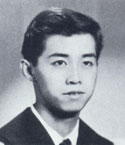Like many driven young men, Thomas Chang would bring his work home with him. The difference with Chang was his “work” was the near-impossible task of creating the world’s first artificial blood cell. And as a 23-year-old undergraduate student in 1956, his “home” was his residence room in McGill’s Douglas Hall.

Remarkably, Chang was successful. Working with improvised materials like perfume atomizers, Chang managed to create a permeable plastic sack, approximately one millimetre in diameter, that could carry hemoglobin almost as effectively as a natural blood cell. In 1989, the New Scientist called Chang’s student research project an “elegantly simple and intellectually ambitious” idea that “has grown into a dynamic field of biomedical research and development.”
Chang’s remarkable career continued as Director of the Artificial Cells and Organs Research Centre at McGill. In the late sixties he discovered enzymes carried by artificial cells could correct some metabolic disorders; he also developed charcoal-filled cells to treat drug poisoning, a now widely used technique. His work on finding a safe blood substitute brought him to prominence in the wake of the Canadian tainted blood scandals of the 1980s and 1990s. In 1991, he was named to the Order of Canada.
At one point considered for a Nobel Prize, Chang has not lost focus on his primary motivation: “To me as a scientist, what is most important is what is most useful to the patient, not what is good for your reputation or what pays the most money. The sick patient should be the most important stimulus for our work.”
